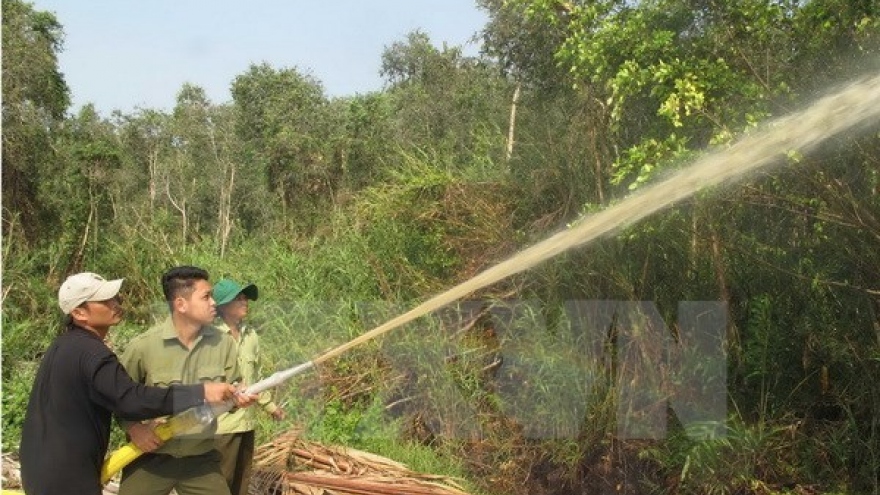Vietnam province mulls clearing protection forest to build industrial park
A considerable area of a 30-year-old protection forest with mangrove trees towering five meters high in the northern Vietnamese province of Thai Binh now risks being cleared to make space for an industrial park.
 |
The project includes the destruction of 150 hectares of forests originally planted to protect the mainland from erosion and landslides, according to the environmental impact assessment submitted by the provincial administration to the Ministry of Natural Resources and Environment.
News of the possible destruction has infuriated villagers around the forest, sparking fears of potential devastation as “the forest is considered far more precious than gold to villagers like us,” Le Ngoc Cung, one local, said.
Cung still recalls that the first trees were planted in the forest in 1986, when a local dike broke.
“The forest has since become a golden shield for thousands of households against storms,” Cung told Tuoi Tre (Youth) newspaper.
“We also use its water to catch seafood in order to earn a living.”
The villager added that the new minister of environment Tran Hong Ha attended a tree planting ceremony in early February in celebration of the World Wetlands Day, “and now they are planning to empty 150 hectares of forest.”
The 320 hectare land plot proposed to be used for the project lies entirely within the biosphere reserve of the Hong (Red) River, according to data reviewed by Tuoi Tre.
The particular150 hectare area marked for clearance was grown as part of a government-backed plan to add five million hectares of forest to Vietnam.
Thai Binh officials are also wary of the plan, warning that the project’s environmental impact assessment notes that clearing 150 hectare forest might create an environment which would allow seawater to reach the mainland and destroy local dike systems and aquatic farms in the event of strong storms.
The report does not mention any specific impact the deforestation may have on the local area.
Dishonest environmental impact assessment
The Thai Binh administration assigned the provincial agriculture department as the developer of the controversial land reclamation project.
The developer, in turn, tasked the monitoring agency under the province’s environment department with preparing the environmental impact assessment.
In the document, the agency says the reclamation will affect areas now used as aquatic farming grounds for 80 households in the Thuy Xuan and Thuy Hai communes, adding that the impact is ‘small’ as these farms yield poor economic outputs.
However, Tuoi Tre was told a much different story from local villagers.
Nguyen Duc Anh, who runs a large aquatic farm, said he was shocked at the assertion that there are only 80 aquatic-farming households in Thuy Xuan and Thuy Hai.
“The data is certainly inaccurate,” he said.
Bui Ngoc Hien, chairman of Thuy Xuan Commune, also said the number of aquatic-farming households in the two communes could not possibly be as low as 80.
Hien’s counterpart in Thuy Hai Commune asserted that in his locale alone, “right now there are as many as 297 households with aquatic farms.”
According to data gathered by Tuoi Tre, there are 354 aquatic-farming households in Thuy Xuan and Thuy Hai, 4.5 times higher than the statistic in the project’s environmental impact assessment.
The developer held two separate meetings seeking feedback from Thuy Xuan and Thuy Hai leaders and residents about the project.
However, Tuoi Tre discovered that invitations for both meetings, held in December 2016, were not extended beyond local leaders.
Simply put, the aquatic farmers – the people most affected by the project – never received an invitation.
The communes’ leaders confirmed that the developer has yet to meet with farmers.
Even so, the environmental impact assessment stated clearly that “following the public meetings, local residents have shown support for the project and its potential to help boost the industry-service development [of the province].”



